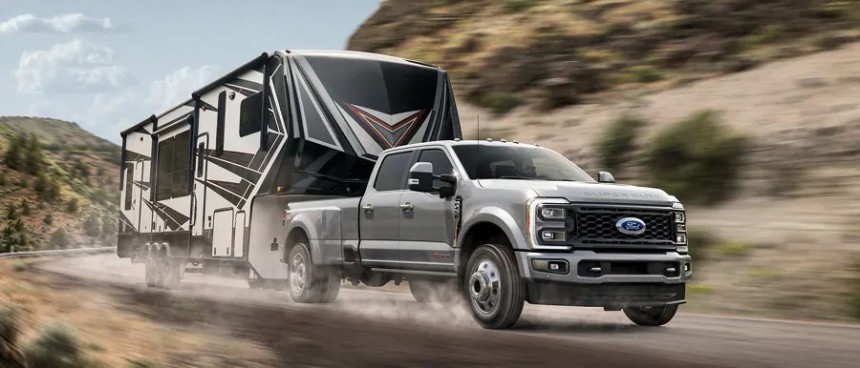Next Ford F-Series Super Duty confirmed to feature ‘Multi-Energy Technology’

Starting in 2026, the F-Series Super Duty will be built in Canada. The plant in question is the Oakville Assembly Complex, with Ford targeting an increase in annual production capacity of up to 100,000 trucks. At the time of reporting, heavy-duty trucks are being built at the automaker’s Kentucky Truck Plant and Ohio Assembly Plant.
Both are operating at full capacity. Rising demand is one thing, but Dearborn’s favorite son also confirmed “to bring multi-energy technology to the next generation of Super Duty trucks.” Emphasis on the plural of truck, which implies that multi-energy technology will go beyond the F-250. The question is: will it stop at the F-350 or will it go all the way to the F-550?
Unfortunately, July 2024 isn’t clear. Also unclear is multi-energy technology, which involves combustion and electric power, or multiple levels of electrification. Remember the Hyundai Ioniq? The Prius-like hatchback used to come in hybrid, plug-in hybrid, and all-electric flavors.
Ford’s half-ton pickup truck is available with a choice of internal combustion, self-charging hybrid and zero-emission powertrains. The hybrid is known as PowerBoost, while Lightning is the designation for the all-electric option. Could Ford Motor Company make a case for an electric Super Duty with current battery technology?
Only time will tell, but a hybrid is certainly feasible. Similar to the F-150 PowerBoost, we expect a small high-voltage battery powering a small electric motor located inside the 10R80 automatic transmission. Super Duty trucks use a heavier-duty 10R, with the most capable of the bunch being the 10R140. While 140 represents 1,400 newton meters (1,033 pound-feet) of torque, that transmission has a lot of work to do to handle the 1,627 newton meters (1,200 pound-feet) produced by the 6.7-liter Power Stroke.

Photo: Ford
Placing an electric motor between the 10R140 and the 7.3-liter Godzilla pushrod V8 or its smaller sibling makes sense, with the motor applying regenerative braking energy capture to recharge the high-voltage battery pack. In the F-150 PowerBoost, which is named after the 3.5-liter EcoBoost, the liquid-cooled battery pack is rated at 1.5 kWh. It is mounted between the chassis rails, below the load floor.
When it came with rear-wheel drive as standard, the F-150 PowerBoost was rated at 25 miles per gallon (9.4 liters per 100 kilometers) on the combined test cycle. However, the hybrid setup became 4×4 only starting with the 2023 model year. In this configuration, it yields 23 miles per gallon (10.2 liters per 100 kilometers).
How big of a difference does the hybrid stuff make over the 3.5-liter EcoBoost on its own? That would be 4.0 miles per gallon, with 19 mpg converting to 12.4 liters per 100 clicks in the metric system. That’s a pretty big difference, which becomes most apparent in annual fuel costs.
Because the F-Series Super Duty comes in heavy-duty and medium-duty versions, there is no EPA fuel economy rating.




